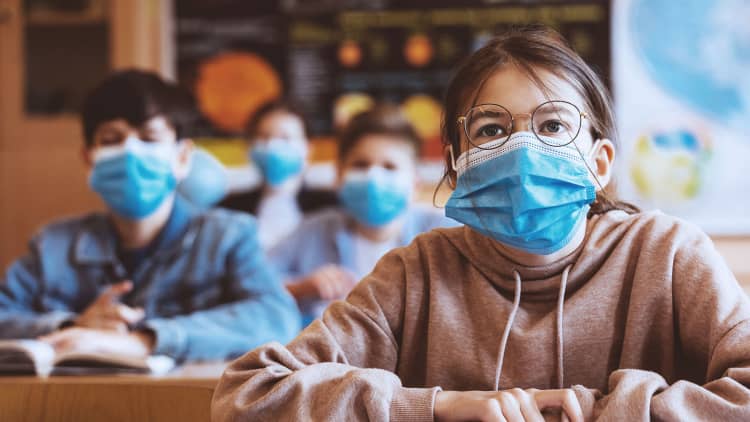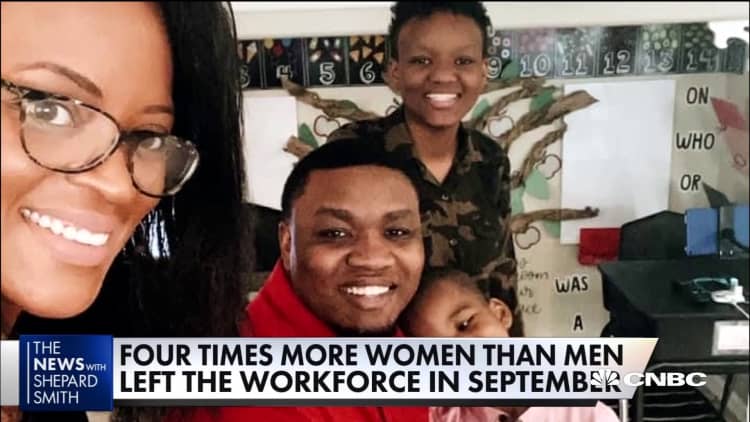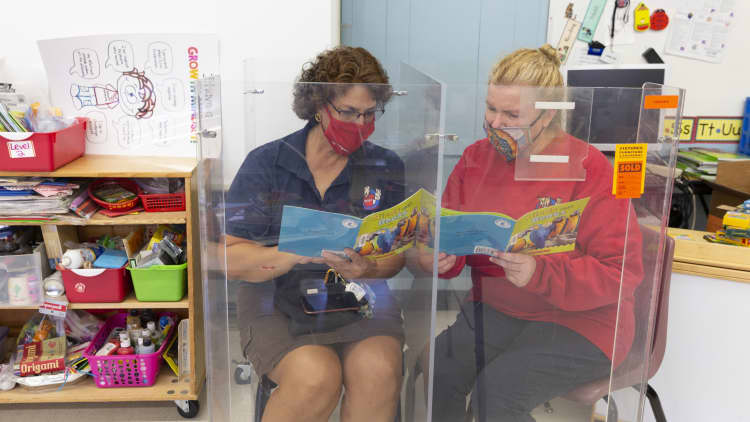
Before the coronavirus crisis, a private school education wasn't something Jennifer Clayton would have considered for her son, Robbie, 6.
Clayton, 43, works in a restaurant in the small town of Lake Hopatcong, New Jersey. Her husband, Joe, is a retired marine. They are not the typical private school family.
But when their local public school went online in the spring, managing her son's school day meant Clayton could not go to work.
More from Personal Finance:
Distance learning is much harder for homeless schoolchildren
Families may opt for public or private school based on reopening
Colleges are slashing tuition to entice students back
The public school had planned to be hybrid in the fall, with a combination of in-person and online classes, however "at the very last minute, the township went all virtual," Clayton said. "I had a slight nervous breakdown."
That day, "I called every single Catholic school in the area," Clayton said. "I wasn't working and I needed to get back," she added. "Something had to give."
Now Robbie attends a private parochial school, which is fully in-person. Tuition plus after-care will cost close to $1,000 a month over the course of the school year.
"I am working to pay for him to go to school," Clayton said. "But I just think it's all working out for the best for our family.
"The money that I'm paying is 1 million percent worth it."
As the pandemic drags on through the fall, more families are seeking out schools that are fully in-person rather than remote — and, for many, that means switching to an independent institution, despite the cost.
"My phone is ringing off the hook with New York City public school families applying to private middle and high school," said Emily Glickman, the president of Abacus Guide Educational Consulting in New York.

"I've never seen anything like it in terms of people calling me this late into the fall," she said. "There's an explosion of families looking to make a last-minute change."
As of mid-October, 6 in 10 independent schools were operating in-person and just 5% were fully online, according to a survey by the National Association of Independent Schools.
That has helped drive interest from a more diverse group of parents nationwide, according to Myra McGovern, a spokeswoman for the organization.
Overall, more than half of all independent schools reported an uptick in inquiries about admission from families from other types of schools, another recent survey by the association found.
There's an explosion of families looking to make a last-minute change.Emily GlickmanPresident of Abacus Guide Educational Consulting
Pre-pandemic, private school enrollment had been on a slow decline. Currently, roughly 50.8 million students are enrolled in public schools, compared to just 5.8 million students in private schools, according to the Department of Education.
Private schools, which generally have larger campuses, smaller classes and greater autonomy, often have more flexibility when it comes to adhering to the standards for reopening this fall, McGovern said.
As a result, families may be able to send their children to school in person, alleviating the burden on parents and, in many cases, allowing them to go to work or pursue employment opportunities from home.
Of course, this also comes at a price. Overall, the average cost of tuition at private schools across all grades is $26,866 a year, with roughly a quarter of all families receiving financial aid, according to the National Association of Independent Schools.
At Providence Country Day School, an independent school in East Providence, Rhode Island, parents are calling every day to ask about admission for next fall or even the current academic year, according to Head of School Kevin Folan. Already, the school accepted a transfer student from public school mid-semester.
At the same time, the school is implementing a tuition reset, which will bring costs down 36%.
"We see a world that is changing so rapidly, it demands a different kind of education than the traditional prep school model, so we are redefining that model accordingly," Folan said.
We see a world that is changing so rapidly, it demands a different kind of education.Kevin FolanHead of School at Providence Country Day
Effective for the 2021-2022 academic year, Providence Country Day's high school tuition will fall to $25,000 from $39,250 and middle school tuition will drop to $22,000 from $34,400.
Although the tuition reduction had been in the works even before the Covid-19 outbreak, "that it also coincides with families seeking options in light of the pandemic — many needing the in-person instruction we offer — is serendipitous," Folan said.
Over the past generation, household wages increased 15% while Providence Country Day's tuition spiked 400%, according to the school.
That upsurge is typical for independent schools, but it does not reflect our diversity and inclusion values, Folan said.

Still, there are many public schools across the country that have reopened successfully despite the obstacles posed by the coronavirus.
"Public education has not been given the credit it's due," said Shari Camhi, superintendent of the Baldwin School District in Baldwin, New York, and a governing board member of the School Superintendents Association. "We have 4,700 students and we are open."
Yet, significant challenges remain with internet access, building capacity and traditional standards for student achievement, she said.
Indeed, early reports of falling grades in school districts across the country have underscored concerns about the toll the coronavirus is taking on education at every level.
"We are going to see an upset in student achievement," Camhi said.
However, "my high school students are probably more in touch with social justice and the political system," she added. "They are more up on current events, but we are not measuring that.
"It feels like people are looking for measures of failure rather than looking for the bright spots."


